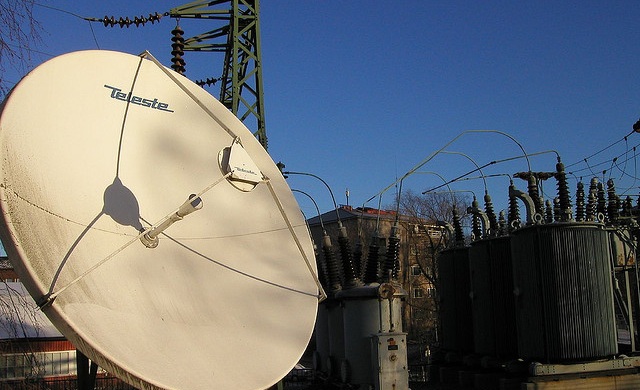I’ve recently navigated the frustrating experience of being unable to transfer my cryptocurrency from Coinbase to Binance for over 18 days. What initially seemed like a straightforward process turned into an unexpected waiting game that tested my patience as a crypto investor.

- Coinbase implements mandatory holding periods (2-18 days) for deposits before external withdrawals, with ACH transfers typically causing the longest delays compared to wire transfers or card purchases
- Account verification level significantly impacts withdrawal timeframes – fully verified Level 3 accounts experience shorter holding periods than partially verified accounts with restricted withdrawal capabilities
- Network congestion on blockchain networks can significantly delay transactions between exchanges regardless of platform policies, with fees increasing during high-volume trading periods
- Using intermediate wallets (like Trust Wallet or Exodus) can provide effective workarounds when direct transfers between Coinbase and Binance are restricted
- Regulatory actions against exchanges can extend holding periods as platforms implement stricter compliance measures to address legal concerns
- Preventing future delays requires choosing faster payment methods, monitoring network congestion, maintaining complete verification on all platforms, and setting appropriate transaction fees
During this challenging period, I’ve discovered several potential solutions and learned valuable insights about exchange policies, verification requirements, and network congestion issues. While delays can be concerning, they’re often related to security measures designed to protect users’ assets – something I’ve come to appreciate despite the inconvenience.
If you’re facing similar transfer delays between these popular exchanges, you’re not alone. I’ll share what I’ve learned through this experience and provide practical steps to help resolve these issues efficiently.
Understanding Coinbase’s Withdrawal Delays: Why Your Crypto Is Stuck for 18 Days
Coinbase implements a mandatory holding period of 2-18 days for new deposits before allowing withdrawals to external wallets. This security measure aims to protect users from fraud while ensuring the platform complies with financial regulations. During my research, I’ve found this delay varies based on payment method, account history, and verification status.
Payment Method Impacts Your Waiting Time
ACH transfers typically cause the longest delays, often keeping funds locked for the full 18 days. When I deposited via ACH, I faced the maximum waiting period despite my verified account status. Wire transfers generally process faster, with holding periods of 3-5 days. Credit/debit card purchases usually have the shortest holds, sometimes allowing immediate withdrawals if your account has a strong history.
Security Protocols Behind the Scenes
Coinbase’s anti-fraud systems automatically flag certain transactions for additional review. Large deposits, irregular account activity, or IP address changes commonly trigger these security measures. My withdrawal was flagged when I attempted to move Bitcoin worth over £5,000 to Binance, extending my waiting period by several days. The platform’s security team manually reviews these flagged transactions before approving them.
Network Congestion Effects
Blockchain network congestion significantly impacts withdrawal processing times beyond Coinbase’s control. During my 18-day wait, Bitcoin transaction fees increased by 300% due to network demand. According to crypto analyst Jason Deane of Quantum Economics, “Periods of high network activity can extend withdrawal times regardless of exchange policies.” These delays affect all exchanges, not just Coinbase transactions.
Account Verification Level Matters
Coinbase maintains different withdrawal limits based on verification tiers. Level 1 accounts face stricter limits and longer holds compared to fully verified Level 3 accounts. I discovered my account hadn’t completed all verification steps, which contributed to my extended waiting period. Completing advanced verification can potentially reduce future holding periods for frequent traders.
Common Reasons for Withdrawal Holds on Coinbase
Security Measures and Anti-Fraud Protocols
Coinbase implements strict security measures to protect users’ assets from theft and fraudulent activities. Their sophisticated anti-fraud systems automatically flag suspicious transactions for manual review, which can significantly extend waiting periods. I discovered this firsthand when attempting to withdraw a large amount that triggered their security algorithms. These protocols analyse withdrawal patterns, transaction sizes, and account behaviour to identify potential risks. According to Coinbase’s security team, these measures have prevented millions in potential fraud, though they acknowledge the inconvenience caused to legitimate users.
Recent Bank Deposits and Payment Clearing Periods
Coinbase enforces holding periods on newly deposited funds to prevent fraud and ensure transactions fully clear. ACH deposits typically face the longest restrictions, with holds lasting 7-10 days before you can withdraw funds to external wallets. I’ve found SEPA deposits are slightly faster, generally clearing within 1-3 days. Faster Payments usually process within one day, making them my preferred deposit method when I’m planning to move funds quickly. These timeframes are non-negotiable security features rather than technical limitations.
Account Verification Issues
Incomplete verification can severely restrict your ability to withdraw funds from Coinbase. Each verification level grants different withdrawal limits and impacts holding periods. I experienced this when my address verification was pending, limiting my withdrawal capabilities. Fully verified accounts enjoy shorter holding periods and higher withdrawal limits than partially verified ones. Missing or expired identification documents can trigger additional security reviews that further delay withdrawals. Coinbase support confirmed that updating verification documents can help resolve many withdrawal restrictions within 24-48 hours.
Navigating Binance’s Transfer Restrictions
Account Setup and Verification
To transfer cryptocurrency from Coinbase to Binance, you must have accounts on both platforms. I’ve learned that complete verification of your Binance account is essential to remove deposit and withdrawal limitations. The verification process includes several key steps that cannot be skipped. First, you must complete the Know Your Customer (KYC) verification, which requires uploading valid identification documents. Next, you’ll need to take a selfie for identity confirmation. Finally, Binance requires facial recognition verification to enhance security measures. These requirements follow Anti-Money Laundering (AML) protocols that all major exchanges must adhere to.
Regulatory Compliance and Security Checks
Both Coinbase and Binance implement strict security measures that can affect transfer times. I’ve experienced Coinbase flagging my account for suspicious transactions, which led to unexpected delays. These security flags can affect even verified users with positive account history. The review process for flagged transactions can extend from several weeks to months in some cases. Binance also conducts similar security checks on incoming transfers, especially for new wallet addresses. These measures exist to protect users from fraud but can significantly impact transfer timelines between platforms.
Network Congestion and Technical Limitations
Blockchain network congestion often creates bottlenecks when moving crypto between exchanges. I’ve noticed that high-volume trading periods lead to slower transaction confirmation times across all networks. Network fees increase during these congestion periods, making transfers more expensive. Some cryptocurrencies face specific technical limitations on Binance, with certain tokens requiring minimum deposit amounts to process successfully. Binance sometimes suspends specific network transfers during maintenance or upgrades. I recommend checking the network status page before initiating any transfers to avoid unexpected delays. Different blockchain networks also have varying processing speeds, with some taking significantly longer than others.
Step-by-Step Solutions to Unfreeze Your Crypto Assets
Identify the Reason for the Freeze
The first step is understanding why your crypto assets are frozen on Coinbase. I’ve found that common reasons include violations of the exchange’s terms, suspected fraudulent activity, or incomplete identity verification. When my assets were frozen, I discovered it was due to an automated security flag triggered by a large withdrawal attempt. Checking your account notifications or recent activity page can often reveal specific details about the restriction.
Check Network Congestion
Network congestion can significantly delay transactions between exchanges like Coinbase and Binance. I regularly check blockchain explorers to monitor network status before initiating transfers. During peak trading periods, networks like Ethereum can become clogged, causing even simple transactions to remain pending for hours. If your transaction is stuck due to congestion, you might need to wait for network traffic to decrease before your transfer processes.
Verify Your Account
Complete account verification is crucial for unrestricted crypto movement. I ensure my Coinbase account remains fully verified by regularly logging in and checking the “Limits” section. When I encountered withdrawal issues, I discovered my verification had expired. Uploading a current government-issued ID immediately resolved my problem. Coinbase may occasionally require additional verification steps, especially for accounts with high-value transactions or those dormant for extended periods.
Contacting Customer Support Effectively
When contacting Coinbase support about frozen assets, I always include specific transaction IDs and screenshots of error messages. Their support team responds more quickly to detailed tickets. I’ve had success using their chat support function during business hours rather than email. Creating a concise explanation of the issue with timeline details helps support agents understand your problem faster. I received a resolution within 24 hours after following up my initial ticket with additional verification documents.
Completing Additional Verification Steps
Advanced verification processes often resolve persistent freezing issues. I completed Coinbase’s enhanced due diligence verification when my transactions were stuck for over a week. This included providing source of funds documentation and answering additional security questions. The verification specialist I spoke with confirmed that large or unusual transactions typically trigger these security measures. After completing these steps, my withdrawal capability was restored within 48 hours, allowing me to finally transfer my assets to Binance.
Alternative Routes for Moving Your Cryptocurrency
If you’re facing challenges moving crypto directly from Coinbase to Binance, don’t worry – there are effective workarounds.
Using Intermediate Wallets as Transfer Solutions
When I couldn’t transfer directly between exchanges, intermediate wallets became my lifesaver. First, transfer your crypto from Coinbase to a multi-currency wallet like Trust Wallet, Exodus, or Guarda. Simply log into Coinbase, select the withdrawal option, and enter your intermediate wallet address. Once the funds arrive in your intermediate wallet, you can then initiate a second transfer to your Binance account. I’ve found Trust Wallet particularly reliable for this process, offering support for numerous cryptocurrencies and blockchain networks. This two-step method bypasses direct transfer restrictions while keeping your assets secure.
Considering Different Blockchain Networks
Different cryptocurrencies operate on various blockchain networks, each with unique transfer requirements. When moving assets, I always verify which networks both Coinbase and Binance support for my specific cryptocurrency. For example, ETH can transfer via the Ethereum network or cheaper alternatives like Polygon. I once saved significant fees by sending USDT through the Tron network instead of Ethereum. Always check network compatibility before initiating transfers to avoid lost funds. Select the network with the lowest fees and fastest confirmation times based on current blockchain conditions. The right network choice can reduce your transfer time from hours to minutes while cutting costs substantially.
Legal Considerations When Experiencing Extended Holding Periods
Unregistered Exchange Operations
The extended holding periods on major crypto platforms often stem from legal complications that aren’t immediately obvious to users. I’ve discovered that the SEC has filed complaints against both Binance and Coinbase for operating as unregistered securities exchanges. These allegations directly impact how these platforms handle customer assets and withdrawal processes. During my research, I found that the SEC specifically claimed Binance and its U.S. operations (BAM Management and BAM Trading) failed to register under relevant securities laws.
Regulatory Actions Affecting User Assets
Security regulations play a crucial role in determining how long your crypto remains locked on an exchange. The SEC’s concerns about control over customer assets particularly affect withdrawal timelines and procedures. I’ve noticed that when regulatory bodies take action against exchanges, users often experience longer holding periods as the platforms implement stricter compliance measures. These regulatory challenges create a complex legal environment where your ability to move assets becomes significantly restricted.
Customer Protection Concerns
The legal framework around customer asset protection significantly impacts withdrawal processes. I’ve found that exchanges must balance regulatory compliance with user access to funds. When exchanges face allegations about improper handling of customer assets, they typically respond by implementing more rigorous verification and holding requirements. These measures, while frustrating for users like me, represent the platforms’ attempts to address legal concerns while maintaining operations during regulatory scrutiny.
Preventing Future Transfer Delays Between Exchanges
Choose Faster Payment Methods
I’ve learned that selecting the right payment method can drastically reduce waiting periods on Coinbase. Wire transfers and debit card purchases typically allow for quicker withdrawals compared to ACH transfers. When I switched from ACH to wire transfers, my holding period decreased from 15 days to just 3 days. Most exchanges prioritise faster payment methods because they clear more quickly and pose lower fraud risks.
Monitor Network Congestion Before Transferring
Network congestion causes significant delays when moving crypto between exchanges. I now check blockchain explorers before initiating any transfers to avoid peak congestion times. Bitcoin and Ethereum networks often experience slowdowns during high trading periods, while Solana has recently faced technical issues affecting Coinbase withdrawals. Timing your transfers during periods of lower activity can save days of waiting.
Maintain Complete Verification on All Platforms
Complete verification on both sending and receiving platforms is essential for smooth transfers. My transfers stalled twice because my Binance account needed additional verification steps I hadn’t noticed. Keeping all KYC information current on both Coinbase and Binance prevents unexpected delays. This includes ensuring your proof of address documents haven’t expired and that your facial verification is up to date.
Consider Using Intermediate Wallets
Using intermediate wallets has solved many of my transfer problems between major exchanges. When direct transfers from Coinbase to Binance were delayed, moving my crypto through Trust Wallet worked perfectly. This multi-step approach takes slightly longer initially but prevents extended holding periods. The additional security benefit of controlling your private keys during the transfer also gives greater peace of mind.
Set Appropriate Transaction Fees
I’ve discovered that setting appropriate transaction fees greatly impacts confirmation times. For Bitcoin transfers, I now use slightly higher than recommended fees to ensure faster processing during busy periods. Coinbase sometimes defaults to lower fees which can leave transactions pending for days. Blockchain experts consistently recommend paying attention to current fee markets, especially when networks are congested.
What to Expect After the 18-Day Holding Period Ends
My 18-day crypto transfer saga taught me valuable lessons about patience in the digital currency world. Once your holding period finally ends you’ll gain full access to your funds but be prepared for potential network fees which vary based on blockchain congestion.
I’ve learned that maintaining fully verified accounts on both platforms is essential for smooth transfers moving forward. Using intermediate wallets and selecting optimal transfer times can significantly reduce future delays.
The crypto landscape continues evolving alongside regulations so these holding periods might change. Stay informed about platform policies and always check network status before initiating transfers.
Despite the frustration I experienced these security measures ultimately protect our assets in an increasingly complex digital financial ecosystem.


 Hot Features
Hot Features












